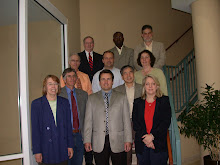The California Supreme Court Case overturning the ban on same sex marriage has led some observers to argue that the repeal of the ban on same-sex marriage is the start of a slippery slope to polygamy. Recent events in the West Texas town of El Dorado uncovered a polygamous compound of the FLDS (Fundamentalist Church of Jesus Christ of Latter Day Saints). While the compound is real, polygyny is also rare in industrialized economies. A recent article in the American Economic Review by Eric Gould, Omer Moav, and Avid Simhon (vol. 98, no. 1, pp.333-357) explains why. The authors build a model that explains the transition from polygyny to monogamy. Stripped to its bare essentials, the authors repeat the biological and anthropological argument that polygyny tends to arise in economies where males have unequal endowments of wealth or earnings. Male inequality allows the richest males to attract multiple females who produce large quantities of children.
How does the transition to monogamy occur? The authors first make the case that the source of male income is itself a determinant of polygyny. When male income and wealth are derived from non-labor sources such as land and natural resources or via corruption as they frequently are in less developed economies, rich males have a comparative advantage in producing large quantities of children. As industrialization proceeds, the return to land and natural resources declines and the returns to human capital rise. A key characteristic of the development process is that women are allowed to become more productive. As female inequality in human capital increases, males and females with high levels of human capital begin to enjoy a comparative advantage in producing quality (educated) children. In addition, as female inequality in human capital increases, women gain the upper hand in determining the terms of the marriage contract and are able to extract (enforce) a monogamous, rather than polygynous contract, from males.
My interpretation of the author's model is that the slippery slope argument against same-sex marriage is a straw man, unlikely to lead the way to polygamous marriage in the future.
Tuesday, May 27, 2008
Subscribe to:
Post Comments (Atom)

No comments:
Post a Comment